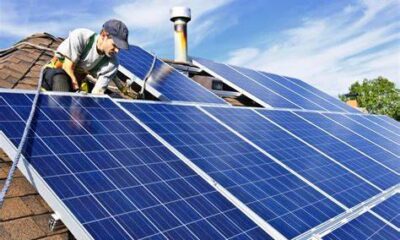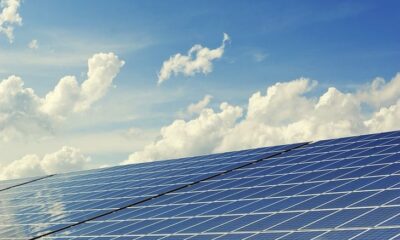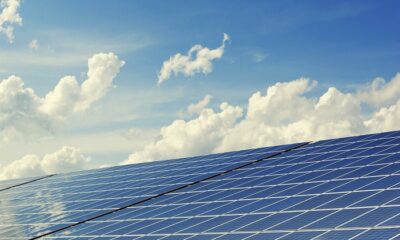Industrial
Types of Solar Panels: A Comprehensive Guide to Their Advantages and Disadvantages

When you decide to install a solar system at your place, you consider different factors to assess the risk versus benefits ratio. For example, we consider the price, efficiency, production, etc. However, there is another important factor that you should always consider before making the final buying decision. This factor is the type of solar panel.
Solar power or solar energy has been criticized a lot for a long time for being inefficient and much expensive. However, as technology improved things start getting better. Solar energy is now considered to be the most efficient energy-producing source around the world. It has been widely accepted by people all around the globe due to its countless benefits and useful features.
Before taking any decision, you should consider which type of solar panel you want to install in the solar system.
The customer needs to know and differentiate between the types of solar panels because the type decides many other things. For example, the installation cost is different for different types of solar panels. Similarly, the manufacturing cost also varies for different types of panels which affects the overall cost of the system. That is why it is considered to be a significant factor in solar panel installation.
Types of Solar Panels
There are many different types of solar panels but they all come under three major categories. The conditions of the place where you are going to install the system and your requirements for the system will decide the right type of solar panel.
There are three major types of solar panels and each type has its advantages and disadvantages. In the following section, you will get to know about the three types of solar panels and their advantages and disadvantages.
Monocrystalline Solar Panels
Solar panels made of 40 monocrystalline solar cells are known as monocrystalline solar panels. These types of solar panels are made up of semiconductors, for example, silicon, etc. silicon is a good conductor that is also stable and non-toxic. Silicon also works well with electricity They are the oldest technology for making solar panels but they have developed a lot with time. If we go back in time a few years ago, at that time most panels were monocrystalline panels. They were used in most residential and commercial solar systems.
Advantages
- They have a longer life as compared to other types of solar panels.
- Another major advantage of monocrystalline solar panels is that their efficiency level is very high. They are made up of a single crystal due to which electrons flow through the crystal freely allowing easy generation of electricity.
- They are smaller in size as compared to other types of solar panels but the important fact is that they can still work with the same efficiency despite the small size.
- First they were used for residential solar systems but they have been developed to use for commercial systems as well now.
- These panels come with a more extended warranty of 25 years or more.
Disadvantages
- One of the greatest disadvantages is that monocrystalline panels are very expensive.
- The efficiency decreases gradually if the panels are not maintained properly.
- Monocrystalline panels require a special angle so that the sunlight hits them directly, otherwise the efficiency effects negatively.
Polycrystalline Solar Panels
Polycrystalline solar panels are a newer technology than monocrystalline solar panels and they are more developed as well. That is why they are gaining much popularity around the world.
Non-aligned silicone crystals are used to make cells that are used in making Polycrystalline solar panels. First solar grade silicone is melted to cast in a mold. After that, it is left to rest so that it can solidify and take shape. The melted silicone in molds is cut in the form of wafers. These solar wafers are later used to form solar panels.
Advantages
- Polycrystalline solar panels are less expensive as compared to monocrystalline solar panels. The reason is that they are produced with a simpler technology that does not require the time and effort used in making monocrystalline panels.
- They can still give you output when the light is less or not appropriate. This means they are more efficient in low-light conditions as compared to monocrystalline solar panels.
- They can maintain the same amount of efficiency as monocrystalline panels even in the unfavorable circumstances like low light.
Disadvantages
- The cells of polycrystalline solar panels are larger which is why they take up more space which is considered to be a major drawback.
- They do not have a longer life span like other types of solar panels.
- They are less durable as compared to their counterparts.
Thin-Film Solar Panels
The latest technology in the solar industry is used to make thin-film solar panels. The important factor to know about thin-film solar panels is that they are made of many other materials besides silicone, for example, cadmium telluride, amorphous silicon, etc.
You can easily differentiate thin-film panels from other types by simply looking at them. They are thin in size as compared to other types of solar panels. They are 350 times less thin as compared to their counterparts that use silicon wafers in production. Thin-fil cells are blue or black. It depends on the materials with which the cells are made.
Advantages
- The production is very simple and much faster as compared to other panel types.
- The carbon footprint of thin-film solar panels is much less than the other types of solar panels.
- They are less expensive as compared to their counterparts.
- They are more flexible as they can be made through different materials and technologies.
Disadvantages
- They have a shorter lifetime.
- They are less efficient compared to other types of solar panels.
- Manufacture warranties of thin-film solar panels for a shorter period.
Final Words
From the above mentioned points about the types of solar panel and its pros and cons, you can decide what type of panel is best depending on your requirements from the solar system and the place of installation. For example, for a home with a large space on the roof, polycrystalline solar panels may be the best choice. However, for homes with small spaces, monocrystalline would be the best option.
-
Blog1 year ago
MyCSULB: Login to CSULB Student and Employee Portal – MyCSULB 2023
-
Android App3 years ago
Cqatest App What is It
-
Android1 year ago
What Is content://com.android.browser.home/ All About in 2023? Set Up content com android browser home
-
Software2 years ago
A Guide For Better Cybersecurity & Data Protection For Your Devices
-
Latest News2 years ago
Soap2day Similar Sites And Alternatives To Watch Free Movies
-
Android2 years ago
What is OMACP And How To Remove It? Easy Guide OMACP 2022
-
Android3 years ago
What is org.codeaurora.snapcam?
-
Business2 years ago
Know Your Business (KYB) Process – Critical Component For Partnerships



























